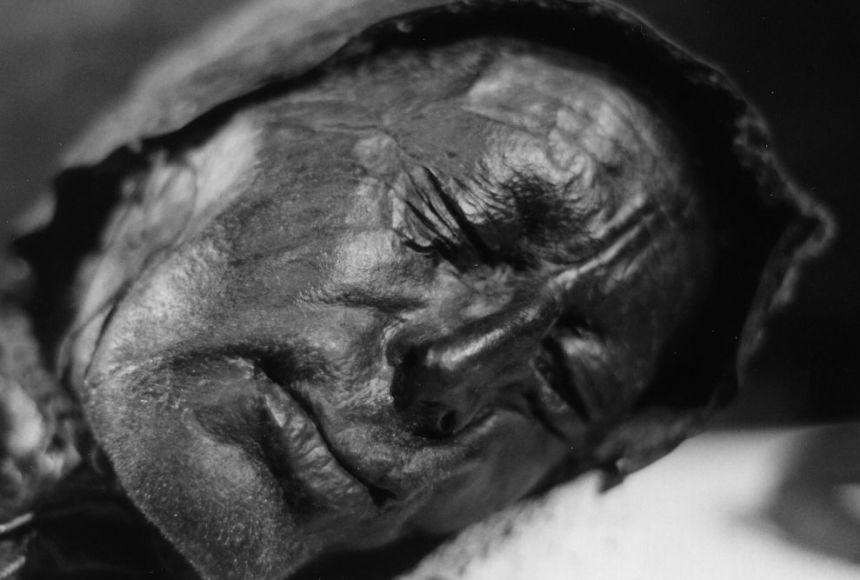 in a northern European bog. " width="860" height="580" />
in a northern European bog. " width="860" height="580" />Bog bodies—mummified corpses still intact 2,000 years after their death—offer questions and clues about life and death in Iron Age Europe.
Chemistry, Earth Science, Geography, Human Geography, Social Studies, World History
Black and white photograph of a long-deceased man found in a northern European bog.
Photograph courtesy of Sven Rosborn, courtesy of Wikimedia. I, the copyright holder of this work, release this work into the public domain.
 in a northern European bog. " width="860" height="580" />
in a northern European bog. " width="860" height="580" />
The bog bodies examined in this video are victims. Violently killed thousands of years ago, these corpses of men, women, and children have been naturally preserved by the unique chemistry of Northern Europe’s bogs. Today, archaeologists and anthropologists are acting as crime-scene investigators. They’re using their knowledge of chemistry, geology , and human behavior to better understand the circumstances that led to these gruesome deaths. Watch this four-minute video from the National Geographic Channel (below), shot on location in a Danish bog, then discuss the questions in the Questions tab.
Instructional Ideas
Consult National Geography Standard 15 (How physical systems affect human systems).
What physical characteristics of Northern European bogs helped preserve the “bog bodies”?
Sphagnum moss interacts with peat and water to create an “antiseptic” bog environment that one expert calls “the secret behind the bog bodies.”
How bog bodies are different from other mummies is explored more fully in Question 1.
Consult National Geography Standard 13 (How the forces of cooperation and conflict among people influence the division and control of Earth’s surface).
Most bog bodies recovered in Ireland have been discovered on the borders of ancient Irish kingdoms. Do students think this is a coincidence?
Many anthropologists think it is a coincidence. However, at least one historian thinks the locations may hint at royal sacrifice . A theory concerning the placement of Irish bog bodies is more fully explored in Question 1.
Consult National Geography Standard 12 (The processes, patterns, and functions of human settlement).
What factors do students think contributed to the deaths of the bodies in the bogs?
Victims may have been killed to appease the “ fertility goddesses that Celtic and Germanic peoples believed held the power of life and death. It could have happened one winter after a bad harvest , the researchers say. People were hungry, reduced to eating chaff and weeds. They believed that one of their number had to die so the rest could survive.”
The rituals archaeologists think are associated with the bog bodies are more fully explored in Question 2.